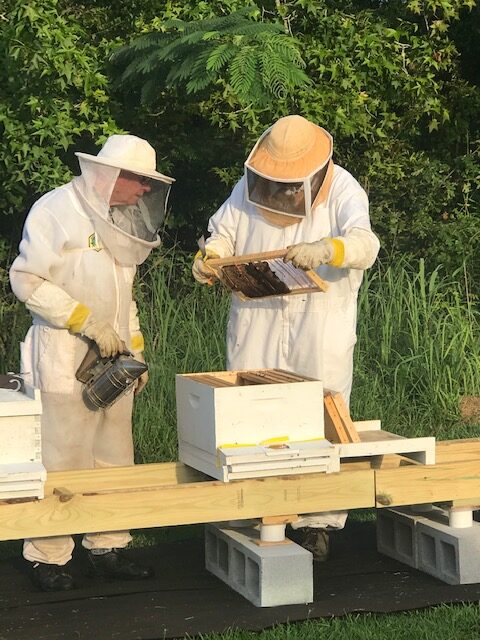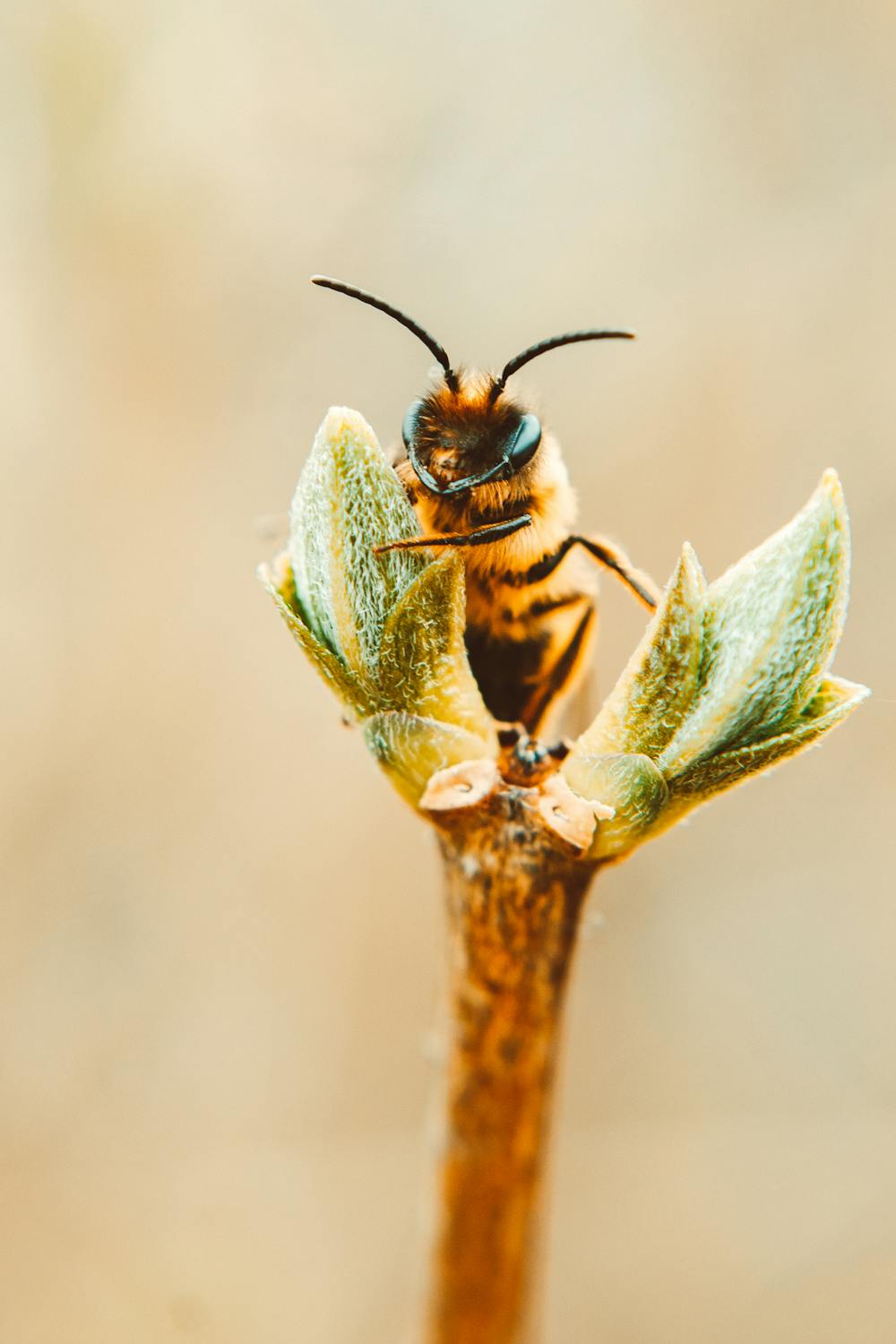About Bee Hive Bouncer

ABOUT US
Beehive Bouncer, LLC exists to combat the pests that are decimating honeybee colonies, by developing effective and affordable methods for battle. Notice the intentional focus on pests and methods. We want to disseminate the best practices we find, even if sales do not generate in the process.
Bees have a large mix of formidable enemies, with the ratio varying drastically over a short distance. One size does not fit all, and there is no single solution. We are exploring methods from Canada, Europe, Australia, India, the US, and the mid-East nations; it does not have to be invented here. Most methods have strong advocates and opponents, so we actively check them out ourselves. We try to avoid synthetic and harsh chemicals, which often become an additional problem.
It is quite easy to focus on one pest, and inadvertently provide an advantage to another in the process. Strategy and sequence matter – a lot. We are located near Starkville, MS. where SHB (small hive beetles) will take out a colony in a single year. Ants can too. Varroa mites will usually get them early in the second year. Our strategy is to take the SHB and ants out of the mix, without providing any advantage to Varroa. Then we are clear to focus on that pest, and others.
There is a place for large-scale, multi-year testing. We just don’t have the luxury of waiting, when bees are continuing such a serious decline. Accordingly, we solicit experimental evidence from our customers, and will seek to apply that in future. Bees are not the only endangered species; so are beekeepers. We want to help God’s most amazing insect survive, and make beekeeping fun and productive again.
PRODUCTS
We are located near Starkville, MS. In this area, Small Hive Beetles will take out a colony in a single year. So can ants. Varroa mites will usually get them early in the second year. Initially, we are making two products available:
The Beetle Bouncer traps approximately 80 percent of the beetles entering a weak hive. Beetles often choose weak hives over strong by a factor of ten-to-one. It is also an effective tool for helping to salvage a colony on the verge of collapse. It normally employs a screen and tray of oil, but can be modified to test and kill Varroa. It also has a viewport convenient for a smart phone, providing a good observation point for experiments.
The Beetle Barrier is the brain-child of Jeff Willard. Our product avoids corrosion and makes periodic maintenance easier. In our opinion, this is the best and most affordable defense for your bees, and should be on the bottom box of every hive.
We use separate barriers for the ants, and describe how to make these in the Barrier instructions.
Once Barriers are in place, we have found the Bouncer well-suited to sugar-dusting.
We are exploring other methods, but these should give an adequate view of our efforts. We hope you find our posts interesting and appropriate to your needs. We want to help God’s most amazing insect survive, and make beekeeping fun and productive again.
Why We Are Unique
CONVENTIONAL WISDOM QUESTIONED
All of this effort will be for naught if applied with a business-as-usual approach. Conventional wisdom has abetted the astounding hive losses in at least four ways. For many years, beekeepers have been coached on techniques to avoid or limit swarming. According to Ronnie Owen, a successful producer of queens and nucs, this is a key mistake. He advocates feeding bees to encourage swarming, then splitting the colony just before it takes place. This makes a lot of sense, since it temporarily halts egg-laying for both members of the split, and that knocks a hole in the reproductive cycle of Varroa. Instead of trying to time for peak colony strength at high nectar flow, just feed to that point, then stop feeding and place a super on for honey. Resume feeding at a later date.
There is also a long-standing opinion that there are too many drones, and they don’t matter much anyway. Wrong! It is well known that drones have only the genetics of the queen, resulting from an egg that she chose not to fertilize. What is not commonly known is this: ** A queen that is mated with a drone from her own colony, can lay fertilized eggs – that still will be drones! The workers will remove the drone eggs from worker cells, which makes it appear the queen is “wearing out”, when she is doing her job, but was improperly mated. When colonies are sparse all around us, queens may not have much choice of a mate, and end up with a spotty brood pattern, resulting in a slowly expanding colony. This is a problem in our area, and we are trying to encourage neighboring beekeepers in our area to include one frame of drone foundation in their best hives. We also want to place our splits in an area surrounded distantly by several strong hives with good genetics.
One of the more recent opinions is that feral colonies are a nuisance, and interfere with chemical controls in domestic hives. Other beekeepers are impressed that these colonies have hung on for many years, despite Small Hive Beetles and Varroa. One side would rather see them destroyed; the other often tries to hive these colonies, and both are probably wrong. When these colonies are seriously disturbed by transferring out of their original cavity, rarely will they recover before small hive beetles wreck the operation and wipe out that genetic line. Perhaps it is better to leave them alone (if they are well behaved), since a gentle feral colony might provide a very desirable drone gene pool that should be propagated.
Another statement commonly taught is to “take your losses in the fall” and combine weak hives with stronger colonies, for better winter survival. This bit of wisdom has merit, but in the presence of pests, could be counterproductive. By late fall, the beetles are in survival mode, unlikely to cause immediate problems. But a weak hive may warn of a critical varroa infestation. Do you really want to combine this colony with a stronger one?
TIPS AND PRECAUTIONS
RECOMMENDATIONS
- Barriers affixed to the lowest box on all hives
- Ant barriers placed beneath a common, leveled frame for several hives
- Two Bouncers per Apiary, placed under the weakest hives
- Check regularly that bees are keeping bottom boards clean of debris
- Observation, Experimentation, Eternal Vigilance
What Customers Are Saying
What We Do
We maintain our own apiaries, firm in the belief that methods and equipment must be proven to work effectively – or they are not worth using. Glenn Oswalt manages these colonies, with a goal of expansion and queen-rearing. Glenn began working with bees at age 14, and returned to beekeeping about five years ago, after working in transportation, factory production, and home and commercial construction for many years. Glenn is amazingly observant and versatile, very useful in experimental setup, and snap decisions (which all good beekeepers must make). Bert Nail kept a small apiary about 45 years ago, but passed it along to a nephew when the “day job” became too demanding. Bert is an electrical engineer who designed control systems at Boeing during the moon-shots, and later taught engineering design for several years at Mississippi State University. He also has experience in aircraft rebuilding and homebuilding techniques. Bert is involved with research and development of both methods and products, working closely with Glenn. Glenn and Bert teamed up when they returned to beekeeping, determined to defeat the pests that have messed up a great profession.
We produce the products we sell, requiring fabrication expertise drawn from several sources. A large part of our factory work involves developing ways to use common tools and homemade jigs to maintain safety and speed production. David Nail leads this effort, with a background in landscape design and construction, and factory production. The harder part of the problem is often getting the bees’ acceptance. And a great plan can be thwarted as pests find a way to evade. We often get into double-digits with prototypes before we find a winner.
Leslie Frank rounds out the team, providing expertise required for online sales and business records. Leslie is a teacher, an avid “animal person”, and recently introduced to the world of honeybees. Leslie snapped the picture below as Glenn inspected a colony at her new apiary. Bert is holding the smoker.
Special KUDOS to Regina Dean Reed, who has provided assistance and advice for online setup, developed our website, and maintains our computing equipment. Regina is our regional Computer Medic, and she has done everything in her power to help Beehive Bouncer succeed.
Our employees are all busy with activities that mesh poorly with immediate phone contact. If you need to reach us, go below and fill in your information. Then enter your comment, just as you would a question. You will be asked to flag it as a QUESTION, a COMMENT, or URGENT. We will try to search daily for those flagged URGENT, and respond soon.
- Wholesale Plants
- Lanscape Design
- Custom Arrangements

